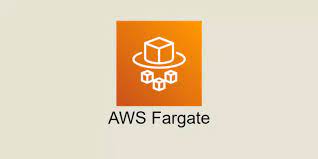Demystifying AWS Fargate: A Deep Dive into Serverless Container Orchestration
 Emmanuel Eziogor
Emmanuel Eziogor
Title: Demystifying AWS Fargate: A Comprehensive Guide to Serverless Container Management
Introduction:
AWS Fargate has emerged as a groundbreaking solution for running containerized applications without the need to manage the underlying infrastructure. In this comprehensive guide, we'll explore the intricacies of AWS Fargate, uncovering its features, benefits, and how it revolutionizes container management in the cloud.
Understanding AWS Fargate:
Definition and Purpose:
- Delve into an overview of AWS Fargate, understanding its role as a serverless compute engine for containers, eliminating the need for manual infrastructure management.
Key Components:
- Explore the core components of AWS Fargate, including task definitions, clusters, and services, and comprehend how they contribute to the seamless deployment and scaling of containerized applications.
Getting Started with AWS Fargate:
Task Definitions:
- Learn to create task definitions that define the containers, their configurations, and resource requirements, laying the foundation for deploying applications on Fargate.
Networking in Fargate:
- Understand the networking capabilities of Fargate, including the assignment of Elastic Network Interfaces (ENIs) and integration with Amazon VPC for secure and isolated container communication.
Deploying Applications on AWS Fargate:
Launching Tasks:
- Explore the process of launching tasks in Fargate, either independently or as part of a service, and understand the benefits of automated scaling based on application demand.
Service Auto-scaling:
- Delve into the auto-scaling capabilities of Fargate services, allowing applications to adapt dynamically to varying workloads, ensuring optimal resource utilization.
Integration with Amazon ECS:
ECS Clusters and Fargate:
- Explore the integration of Fargate with Amazon ECS clusters, providing a unified and managed platform for deploying, running, and scaling containerized applications.
Amazon ECS Console:
- Navigate the Amazon ECS console to efficiently manage Fargate tasks, clusters, and services, gaining visibility into resource utilization and operational insights.
Security and Compliance:
Task IAM Roles:
- Understand the importance of IAM roles for tasks, granting granular permissions to Fargate tasks, ensuring secure access to AWS resources.
Encryption and Compliance:
- Explore encryption options and compliance features within Fargate, ensuring data security and regulatory adherence for containerized applications.
Monitoring and Logging:
CloudWatch Integration:
- Integrate AWS Fargate with Amazon CloudWatch for comprehensive monitoring, enabling real-time insights into container performance, resource usage, and application health.
Logging Best Practices:
- Implement effective logging strategies using AWS Fargate, ensuring streamlined troubleshooting and debugging for containerized applications.
Cost Optimization Strategies:
Resource Configuration:
- Optimize costs by configuring Fargate resources effectively, matching application requirements without over-provisioning.
Spot Pricing and Savings Plans:
- Explore cost-saving opportunities through leveraging Fargate Spot instances and AWS Savings Plans, enhancing cost efficiency for container workloads.
Conclusion:
AWS Fargate stands at the forefront of serverless container orchestration, offering a simplified and efficient approach to deploying and managing containerized applications. This comprehensive guide provides the insights and knowledge needed to leverage the full potential of AWS Fargate, empowering businesses to scale, secure, and streamline their containerized workloads in the cloud.
Subscribe to my newsletter
Read articles from Emmanuel Eziogor directly inside your inbox. Subscribe to the newsletter, and don't miss out.
Written by
